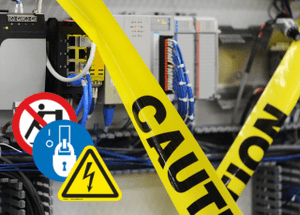OSHA Launches REP to Combat Hearing Loss

With workplaces having many noisy operations and machinery, workers are at risk of unsafe levels of noise exposure every day. Exposure to loud noises, no matter how frequently, can lead to irreversible hearing damage and hearing loss. And unfortunately, these everyday noises can contribute to workplace accidents due to it being difficult to hear your own team and important warning signals.
The Occupational Safety and Health Administration’s (OSHA) Region V office in Chicago recently established a regional emphasis program (REP) of targeted outreach and enforcement of the agency’s occupational noise exposure standard (29 CFR 1910.95) in Midwest manufacturing facilities.
“Earning a living should not come at the expense of hearing loss,” OSHA Acting Regional Administrator William Donovan said in a statement. “Hearing conservation programs are designed to prevent workplace hearing loss, protect remaining hearing, and provide employers and workers with the knowledge and equipment to control and reduce exposure to noise.”
Alarming PPE Numbers Spark a Three
Month Plan
The Chicago Regional Office noted that Bureau of Labor
Statistics (BLS) research found that over half of workers (52.3 percent) in production
occupations – a group that includes computer-controlled machine tool operators,
engine assemblers, machinists, structural metal fabricators and fitters, and
tool and die makers – did not use personal protective equipment (PPE)
to mitigate workplace noise exposure.
OSHA wants workplace employers to take the necessary steps to keep their workers safe to identify, reduce and eliminate hazards related to high levels of noise in the REP’s initial phase. This campaign began on June 1, 2021, and will be followed by a three-month outreach, after which the REP will empower OSHA to schedule and inspect select manufacturing industries in Region V with hearing loss rates that are higher than the national average.
OSHA Region V is made up of the states of Illinois, Indiana, Michigan, Minnesota, Ohio, and Wisconsin. Enforcement activities will include “the inspection and review of operations and working conditions, injury and illness records, and safety and health programs to identify and obtain corrections of workplace hazards at all applicable inspection sites.”
Understanding
Region V Regional Emphasis Program
The Region V REP will involve outreach followed by enforcement
which includes:
- Outreach activities such as letters to employers, training sessions with stakeholders, electronic information sharing activities, and news release broadcasts.
- Enforcement, beginning after three months of outreach, involving the inspection and review of injury and illness records, operations and working conditions, and safety and health programs to identify and obtain corrections of workplace hazards.
The initial outreach phase of the REP will be made up of presentations to industry organizations and stakeholders as well as informational mailings to employers and apprenticeship programs; local hospitals, occupational health clinics, and safety councils; and professional associations within the region.
Industry groups targeted in the REP are agriculture, construction, and mining machinery; household and institutional furniture; metalworking machinery; nonmetallic mineral products; paper; plastics and rubber products; primary metal products; printing; transportation equipment; and wood product manufacturing as well as other miscellaneous manufacturers.
What
to Prepare For During Inspections
During inspections, agency compliance safety and health
officers (CSHOs) will follow a set of procedures that include:
- Reviewing the OSHA 300 injury and illness logs for any standard threshold shifts in hearing, and any noise monitoring data collected by the employer;
- Conducting a walk around of the facility to obtain sound level meter readings, identifying noise levels in excess of OSHA’s exposure limits (both the action level and permissible exposure limit) – if sound level meter readings are below OSHA’s exposure limits during working conditions representative of a typical work shift, the CSHO will terminate the portion of the inspection related to noise hazards;
- If the sound level meter readings indicate a potential for noise overexposures, the CSHOs will conduct full-shift noise monitoring, including sound level meter readings and personal noise dosimetry.
OSHA’s permissible exposure limit for noise is 90 decibels over an eight-hour time-weighted average period. Under OSHA’s Occupational Noise Exposure Standard (1910.95), workers must cut their maximum exposure time in half for every five decibel increase.
OSHA requires employers to implement a hearing conservation program when the average noise exposure reaches or exceeds 85 decibels, which the CDC compares to the sound of traffic or a gas-powered leaf blower. OSHA also provides employers with hearing conservation guidelines to prevent hearing loss and damage within their employees.
Leaders in Safety
Best Practices
For the most up-to-date information on OSHA compliance related to
hearing protection and the new REP, you can check the OSHA website regularly for updates.
And, keep Clarion Safety in mind when updating your visual safety communications in line with changes and regulations to your internal policies. We have a full line-up of hearing protection and PPE equipment-related signage – and limitless custom options! We're always here to answer any questions you may have on warnings and identification.



